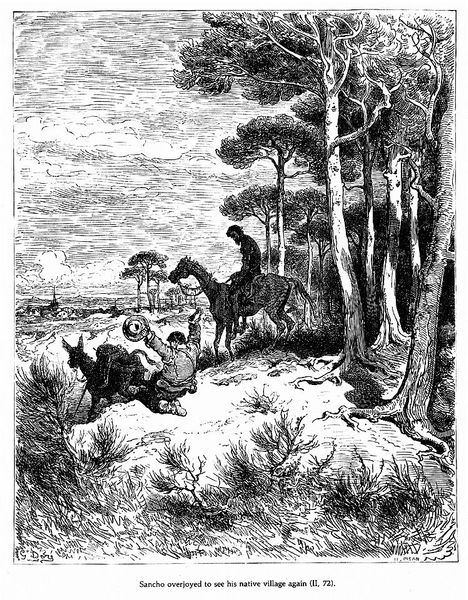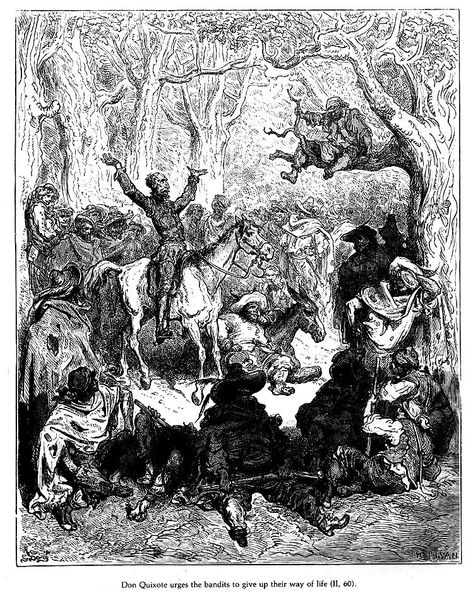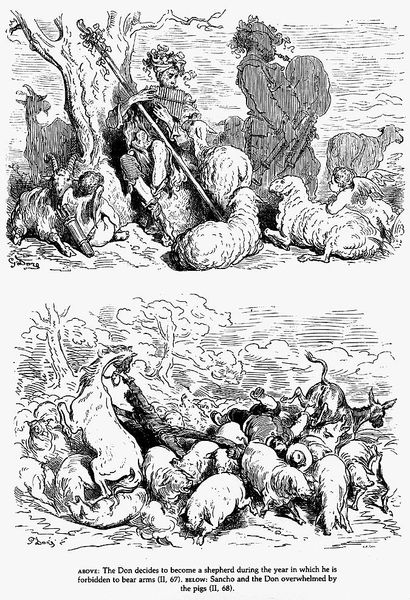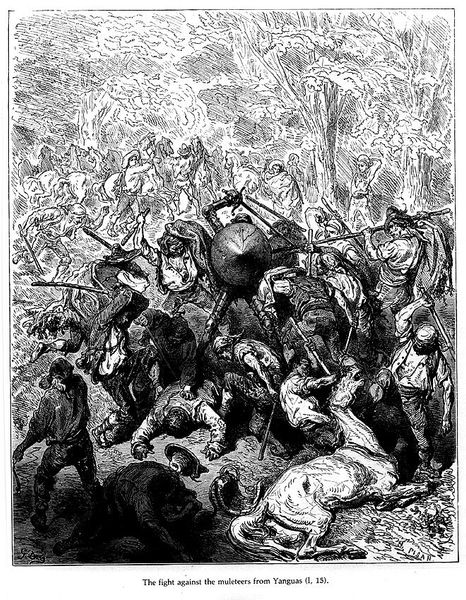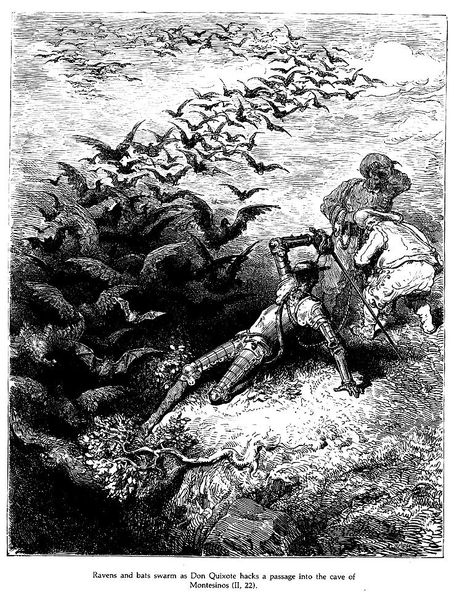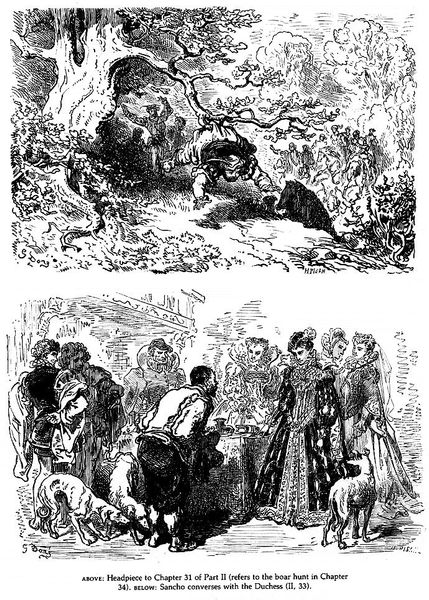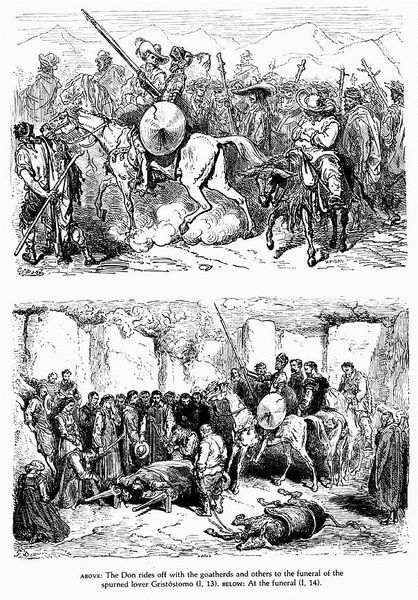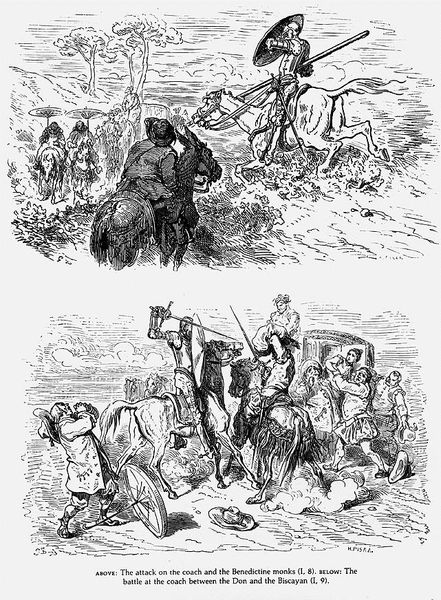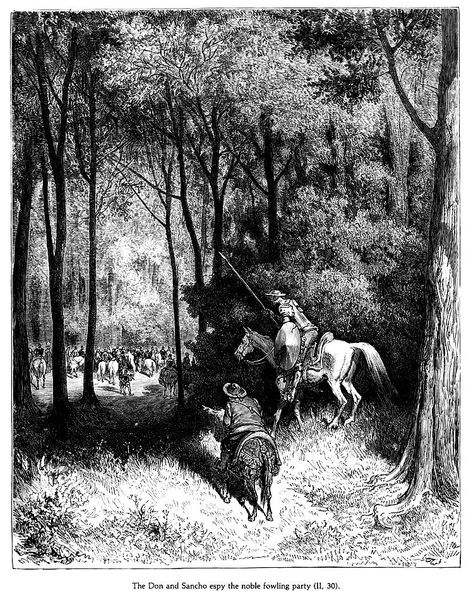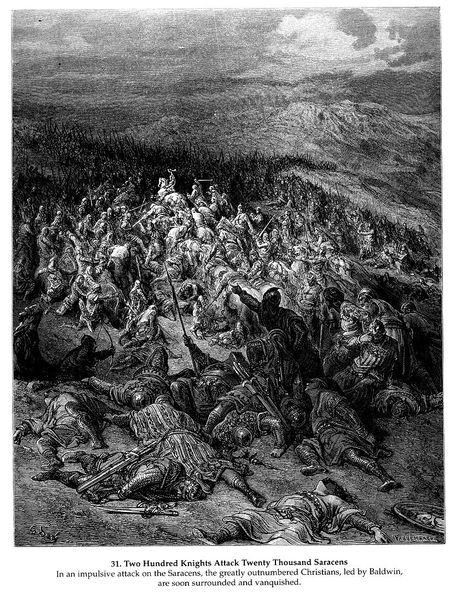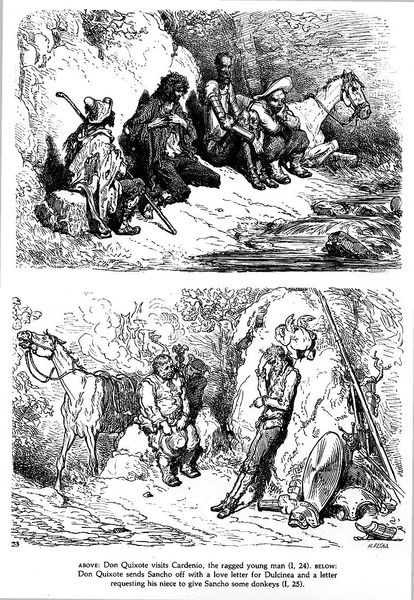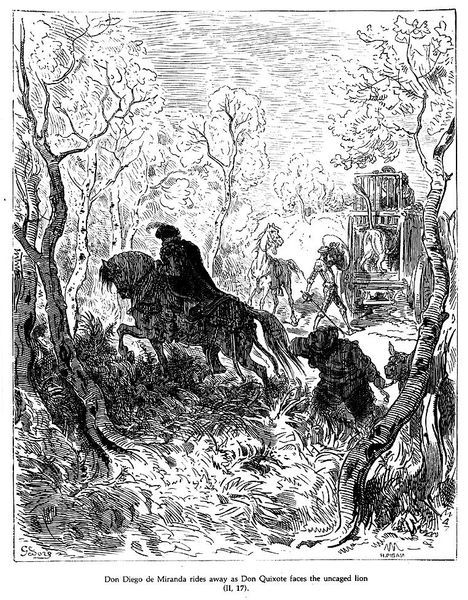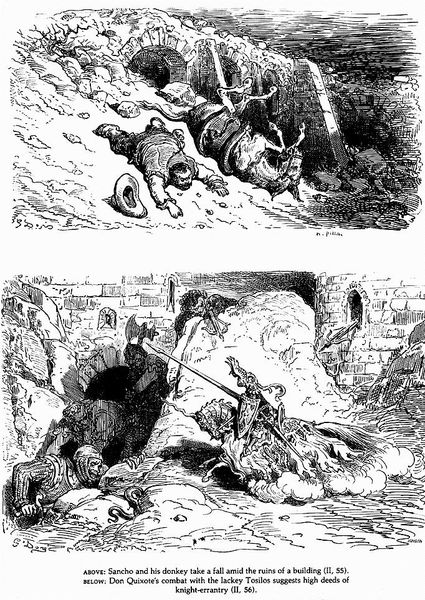
drawing, photography, pen, engraving
#
drawing
#
narrative illustration
#
narrative-art
#
animal
#
pen illustration
#
landscape
#
photography
#
romanticism
#
horse
#
pen
#
engraving
Copyright: Public domain
Editor: Here we have Gustave Dore’s "Don Quixote", an engraving. The scene feels chaotic, a whirlwind of sheep and dust. What strikes me most is the contrast between the densely packed sheep in the foreground and the vast, almost empty landscape behind. What do you see in this piece? Curator: Immediately, I observe the dynamic interplay of line and texture. Dore masterfully employs hatching and cross-hatching to create a rich tonal range. Consider the contrast between the light, almost ethereal sky, achieved through delicate, sparse lines, and the dense, almost impenetrable mass of the sheep. Notice how this density directs the eye towards the focal point. What compositional techniques do you identify in creating this dynamic tension? Editor: The way Don Quixote is positioned – almost as if he is part of the sheep pile, despite his verticality? The dark, almost circular mass of the sheep definitely draws my attention, before resolving the horseman figure. Curator: Precisely. Dore uses a strong diagonal to pull the viewer from that dark mass of sheep, leading them into the background and contributing to the illusion of depth. The strategic placement of figures in the middle ground, engaged in action, amplifies the sense of narrative momentum, wouldn't you agree? And the contrast reinforces Don Quixote’s own delusional perspective. Editor: It's fascinating how much visual information is packed into this seemingly simple engraving. I'm seeing new layers and a different dimension to it that I didn't see at first. Curator: Indeed. Dore's technical virtuosity allows him to translate a complex narrative into a single, visually arresting image, achieving an emotional depth, primarily using just lines and tonal arrangements.
Comments
No comments
Be the first to comment and join the conversation on the ultimate creative platform.
